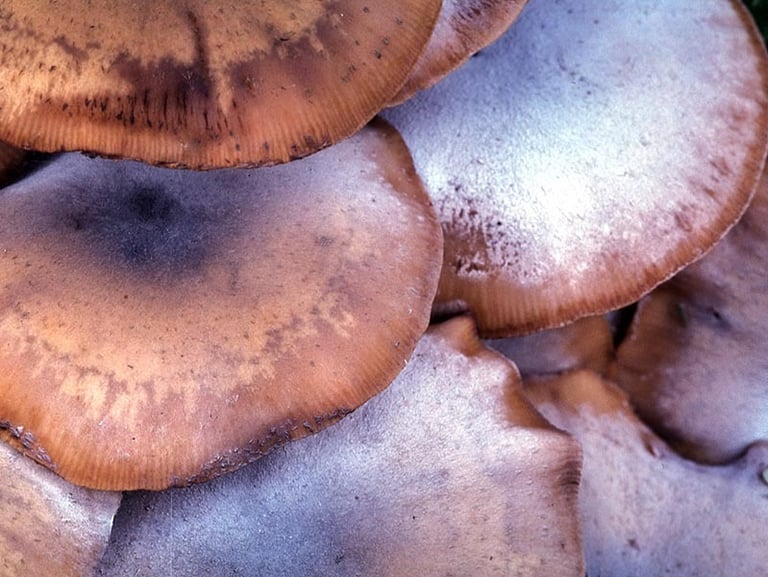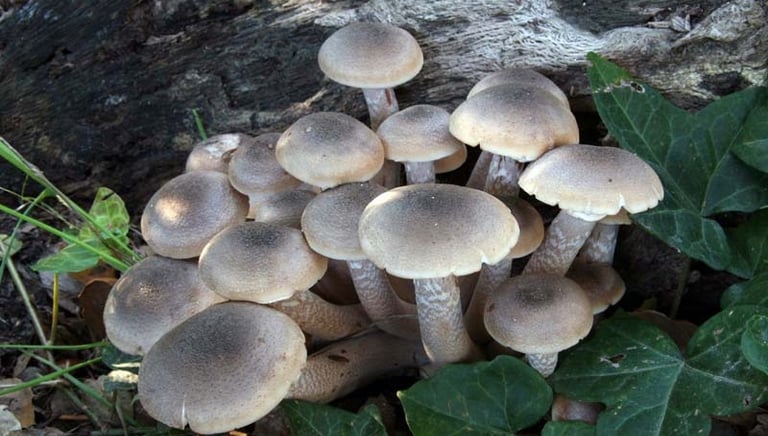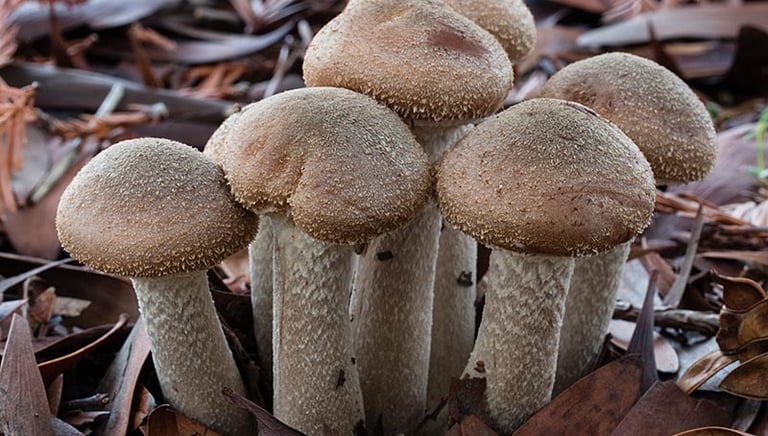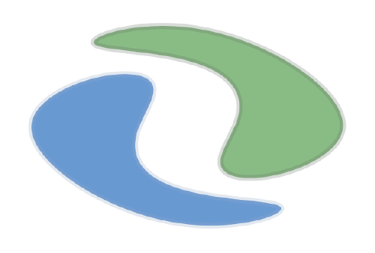Armillariella Mellea




Image By Terry Goyan
Image By Fred Stevens
It is important to note that while Armillariella mellea is not generally considered poisonous to humans, it can cause significant damage to trees and other woody plants. As with all wild mushrooms, it is recommended that you do not consume Armillariella mellea unless you are a trained mycologist and can positively identify it.
Description
1. Cap: The cap of Armillariella mellea is typically 3-10 cm in diameter, with a convex shape and a yellowish-brown to honey-brown color. The surface of the cap is often slightly sticky when wet, with a smooth texture and no visible scales or warts.
2. Gills: The gills of Armillariella mellea are closely spaced, slightly decurrent, and pale yellow to cream in color. They are not forked, and they do not reach the stem.
3. Stem: The stem of Armillariella mellea is typically 3-8 cm tall and 0.5-1.5 cm thick, with a whitish to pale yellow color and a fibrous texture. The base of the stem often has a rhizomorph that is black and cord-like in appearance.
4. Spores: The spores of Armillariella mellea are elliptical or oval in shape, with dimensions of around 6-10 x 4-5 µm, and a color that ranges from white to pale yellow. The spores are released from the gills of the mushroom and are dispersed by the wind.
5. Habitat: Armillariella mellea is commonly found growing in clusters around the base of trees, stumps, and other woody debris. It is associated with a range of tree species, including oaks, beeches, pines, and spruces.







